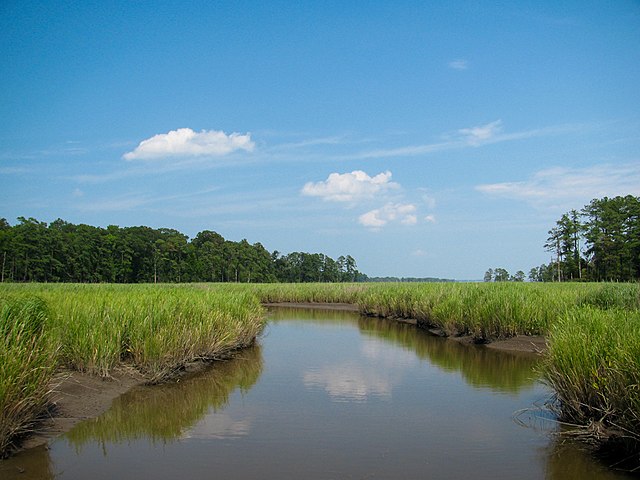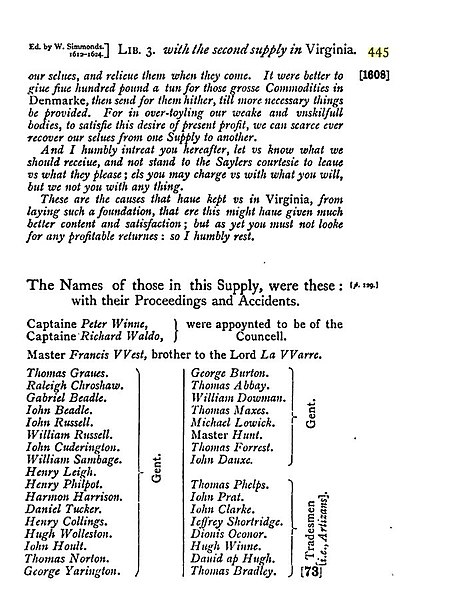Robert Hunt, a vicar in the Church of England, was chaplain of the expedition that founded the first successful English colony in the New World, at Jamestown, Virginia, in 1607.
First Landing Memorial Cross at Cape Henry
Robert Hunt Memorial Shrine at Jamestown
The Jamestown settlement in the Colony of Virginia was the first permanent English settlement in the Americas. It was located on the northeast bank of the James River, about 2.5 mi (4 km) southwest of the center of modern Williamsburg. It was established by the Virginia Company of London as "James Fort" on May 4, 1607 O.S., and was considered permanent after a brief abandonment in 1610. It followed several failed attempts, including the Lost Colony of Roanoke, established in 1585 on Roanoke Island, later part of North Carolina. Jamestown served as the colonial capital from 1616 until 1699. Despite the dispatch of more settlers and supplies, more than 80 percent of the colonists died in 1609–1610, mostly from starvation and disease. In mid-1610, the survivors abandoned Jamestown, though they returned after meeting a resupply convoy in the James River.
The ruined tower of the 17th century Jamestown Church; the nave was reconstructed in 1907 on its original foundations
Salt marshes along Jamestown Island. The ample wetlands on the island proved to be a breeding ground for mosquitoes.
Names of those on the Second Supply – Page 445 (or Page 72) "The Generall Historie of Virginia, New-England, and the Summer Isles", by Capt. John Smith
Mass grave at Jamestown discovered by archaeologists, beneath the foundations of one of the later capitol buildings






